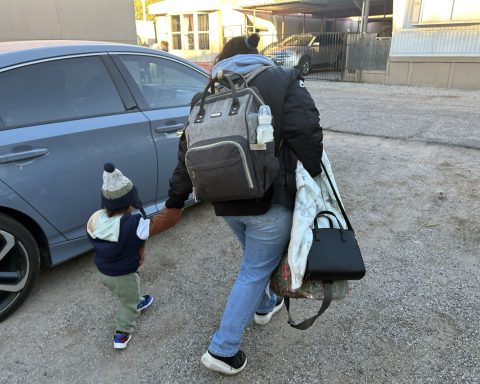Hotel chains from America, Europe and Asia continue to bet on Cuba and, far from retiring, they are expanding “confident” in the recovery of this tourist destination despite the serious economic crisis that the island is suffering.
“Our commitment continues to be to develop the tourism in Cuba despite the specific difficulties”, he declared to EFE the manager of the Varadero Beach complex of the Spanish company Barceló, which operates three facilities in the Caribbean country.
From its stand at the International Tourism Fair (FitCuba), held this week In Havana, the Barceló representative pointed out that a sign of the “confidence in Cuba” is the increase in the number of visitors, even though “it does not reach the level of 2019”, when the figure was close to 5 million.
The Cuban Minister of Tourism, Juan Carlos García Granda, announced at the fair that the island had reached the million tourists in so far this year. The figure represents an increase compared to 2022, but it is not yet expected to recover pre-pandemic levels nor will it be easy to achieve the government objective of 3.5 million visitors for the whole year.
The situation in the country is not easy. Blackouts are frequent, there are shortages of food, medicine and fuel, the inflationary spiral has skyrocketed prices and many roads and public infrastructure are in poor condition.
This negatively affects a vital sector, the second item of gross domestic product (GDP) and the third source of foreign currency, from the offer in the buffets of all-inclusive resorts to the availability of fuel for rental vehicles, passing for attention and certain services in tourist infrastructures.
Minister: “The recovery of Cuban tourism has been difficult”
However, this scenario does not stop the expansion project of the Canadian Blue Diamond Resort hotel chain, which has been in Cuba for 12 years and is one of the largest, with 28 hotels and nearly 11,000 rooms.
“We are growing to the east: Santiago de Cuba, Camagüey, Holguín and we seek to combine this circuit with Trinidad (center), Havana, Varadero (west) and other tourist poles,” he told EFE the commercial director of the company, Rafael Villanueva.
“We are very optimistic, we see possibilities and we are hopeful that we will achieve the results that we set for ourselves,” added the Spanish businessman, who also participated in FitCuba.
The representative of Blue Diamond Resort insisted that “we must trust the destination Cuba for its potential in tourism; above all the huge smile in any place you go and the strength that makes you want to return”.
Iberostar and Meliá consolidate
Cuba closed its borders in 2020 to stop the spread of COVID-19, thus reducing the entry of international tourism and the foreign exchange provided by this sector.
The recovery in 2022 was slow, while in other Caribbean sun and beach destinations such as Cancun (Mexico) and Punta Cana (Dominican Republic) the rebound has almost doubled, according to experts consulted by EFE.
For the Cuban division of Iberostar, this represented a “decommercialization in comparison with Mexico, which never closed borders, or with the Dominican Republic, which opened them very quickly,” the Marketing Director of that Spanish chain, Alexei Torres, explained to EFE.
“It has taken work, but they continue to bet on Cuba,” said Torres, who considered that the “main value of this destination is its people, the quality standards and the resilience of the people.”
Iberostar, with 18 hotels in the country, opened a new destination in Cayo Cruz, Camagüey, and expands the Hotel Gran Trinidad, with 40 rooms, as part of the “diversification”.
“The intention is to diversify not only the traditional sun and beach segment, but also the conventional one. Cuba is the venue for large events and we also want these events to take place in our convention rooms,” added Torres.
Another of the companies with a great presence is the Spanish Meliá, which has just announced that it will develop four 4 projects in Cuba, in addition to its current 33 facilities with 13,916 rooms.
The chain abandoned the management of three hotels in Cuba due to the pandemic, alleging “few commercial opportunities”, but is now expanding its presence in Havana and Holguín.
singapore inserts
The Singaporean company Banyan Tree Hotels Resorts is also expanding into Cuba, he told EFE Debbie Gómez, the commercial director of the Dhawa brand of this chain, which has been operating in the northern keys of Villa Clara for five years.
“(The crisis) has been a challenge for us, but we have managed it because we have faith in Cuba,” says this Dominican businesswoman, who considers that “the passenger who comes to Cuba seeks to know what the country really is and knows the lacks”. For Gómez, “Cuba’s greatest attraction is its people.”
“The Cuban market reminds me a lot of my homeland (Dominican Republic) because people make a huge difference in what is done,” added Gómez, who announced that the group “is planning three more hotels in Varadero and another in Havana ”.
Cuba currently has 81,000 rooms operated by 24 joint ventures and 18 foreign managers, according to official data. Most of them are managed by the state company Gaviota, which belongs to the GAESA business conglomerate of the Armed Forces.















